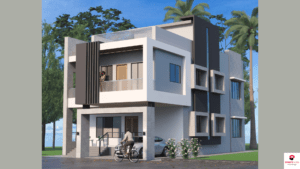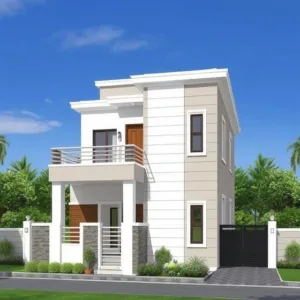Have you ever walked into a room and felt amazed by the bright, airy feeling created by the roof design? Chances are, that space had a lantern window. These windows don’t just let in light they also add style and charm to a home. In this blog, we’ll break down what a lantern window is, its features, benefits, where you can use it, and how it’s different from skylights.
Table of Contents
ToggleWhat Exactly is a Lantern Window?
A lantern window, also called a roof lantern, is a window structure placed on top of a flat roof. Instead of being flat like a skylight, it is built in a raised shape, usually in the form of a pyramid, dome, or rectangle with angled glass sides.
Because of this raised design, it brings in more natural light from different angles. It also becomes a focal point of the room, adding height and elegance. Traditionally, lantern windows were seen in large conservatories and historic buildings, but now they are very popular in modern homes and offices.
Characteristics of Lantern Windows
Lantern windows stand out because of their unique design. Here are the main features:
Raised Structure – They sit above the roof, projecting upward, unlike flat skylights.
Angled Glass Panels – Made up of several panes of glass supported by a frame, usually aluminum, timber, or uPVC.
Shapes and Styles – Available in square, rectangular, octagonal, and circular shapes to suit different roof designs.
Glazing Options – Modern lanterns often use double or triple glazing for insulation, noise reduction, and safety.
Ventilation – Some lanterns can be opened to allow fresh air and improve circulation.
Aesthetic Appeal – They add character, giving the interior a luxurious and open look.
Benefits of Lantern Windows
Installing a lantern window offers both practical and visual advantages:
More Daylight – Their angled sides capture sunlight from multiple directions, brightening the room better than a flat skylight.
Energy Efficiency – With modern glazing, they help retain warmth in winter and keep interiors cooler in summer, reducing energy bills.
Better Ventilation – If designed with opening sections, hot air can rise and escape, keeping the room comfortable.
Enhances Room Design – They create a sense of height and openness, making even small rooms feel larger.
Property Value – A stylish lantern window can increase the resale value of your home by adding uniqueness.
Versatile Look – Works equally well in both traditional buildings and modern architecture.
Applications: Where Can You Use Lantern Windows?
Lantern windows are versatile and can be installed in many different spaces:
Living Rooms – They create a bright, welcoming area perfect for relaxation.
Kitchens & Dining Areas – Ideal for family spaces where natural light makes cooking and dining more enjoyable.
Hallways & Entrances – They turn dark, narrow spaces into inviting areas filled with daylight.
Extensions & Conservatories – A popular choice for home additions, as they make the new space feel more open and connected to the outdoors.
Commercial Buildings – In hotels, restaurants, and offices, lantern windows add a touch of sophistication and luxury.
Lantern Windows vs Skylights: The Key Differences
While both lantern windows and skylights bring light into a room, they work differently. Here’s a direct comparison:
| Feature | Lantern Window | Skylight |
|---|---|---|
| Design | Raised structure with pitched or pyramid-shaped glass | Flat or slightly angled glass in the roof |
| Light Quality | Spreads light evenly from different angles | Direct light, can create strong beams and glare |
| Aesthetic Impact | Decorative, adds elegance and height | Minimalist, blends into the roof |
| Ventilation | Can have opening panels for airflow | May be fixed or vented, but less effective |
| Best For | Large spaces, extensions, statement ceilings | Small rooms or spaces needing simple daylight |
| Cost & Installation | Generally more expensive, needs stronger roof support | Cheaper, easier to install |
Installing a Lantern Window: What to Know
If you’re considering a lantern window, installation is an important factor. Here are the key points:
Flat Roof Requirement – Lantern windows are usually installed on flat or low-pitched roofs.
Structural Support – Since they are heavier than skylights, the roof must be strong enough to hold the frame and glass. Sometimes reinforcement is needed.
Professional Installation – It’s best to hire experts because cutting into the roof and sealing the window requires precision to prevent leaks.
Weatherproofing – Proper sealing around the frame is critical to avoid water leakage.
Ventilation Option – Decide if you want fixed glazing or an opening mechanism for airflow.
Energy Efficiency – Choose double or triple glazing to reduce heat loss and keep the home comfortable.
Maintenance Access – Consider how you’ll clean the glass (self-cleaning glass is a good option for hard-to-reach areas).
Installation Time: Most installations take 1–3 days, depending on the size and roof structure.
Cost: Prices vary by size, glazing type, and frame material, but lantern windows are generally more expensive than skylights due to their design and installation needs.
Conclusion
A lantern window is not just a way to let in light it’s a design statement that transforms how a space looks and feels. Whether you’re renovating your kitchen, adding a new extension, or upgrading a living room, a lantern window can make it brighter, more spacious, and more stylish.
Choose a skylight if you want a simple, affordable daylight solution.
Choose a lantern window if you want elegance, more light, and a stunning feature.
With proper installation, a lantern window can serve you beautifully for years while adding long-term value to your home.
Brighten Your Home with SmartScale House Design
Want to bring more natural light and style into your home? At SmartScale House Design, we create custom house plans that perfectly integrate features like lantern windows, skylights, and modern elevation designs.
👉 Contact SmartScale today and let us design a home that’s bright, functional, and uniquely yours.








